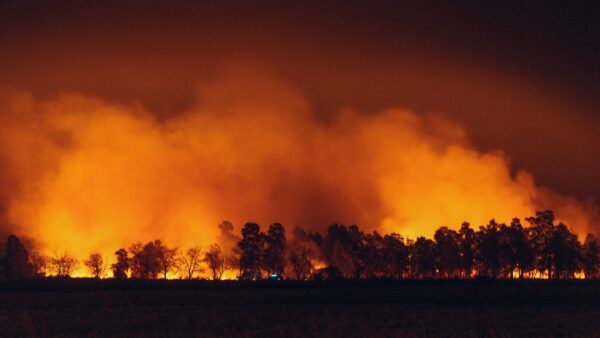Australia's massive global carbon footprint set to continue with fossil fuel exports
Australia has a global carbon footprint that far exceeds its economic size and population - and is responsible for around 4.5% of global fossil carbon dioxide emissions, with 80% of those emissions coming from its fossil fuel exports.
Share

Australia has a global carbon footprint that far exceeds its economic size and population - and is responsible for around 4.5% of global fossil carbon dioxide emissions, with 80% of those emissions coming from its fossil fuel exports, according to a new analysis released by Climate Analytics Australia today.
The report, "Australia's global fossil fuel carbon footprint," commissioned by the Australian Human Rights Institute, concludes that there is no sign of Australia “transitioning away” from fossil fuels - the country is amongst the largest fossil fuel exporters on the planet, and its fossil fuel exports will remain close to the present record levels all the way through to 2035.
By 2035 global fossil CO2 emissions should have reduced by 64% to keep the 1.5oC limit in reach.
The report calculates the cumulative fossil CO2 emissions from Australia's fossil fuel exports 1961-2023 at 30 billion tonnes of CO2. But under current government policies this is set to increase by 50% over the next decade to 2035. Along with domestic CO2 emissions, this would consume 9% of the remaining global carbon budget to limit warming to 1.5°C.
"As people across the planet suffer from increased wildfires, floods and record heat, governments are focussing on reducing their emissions, to keep warming to 1.5 degrees, and must transition away from fossil fuels," said Climate Analytics Australia CEO, Bill Hare.
The Global Stocktake agreed by all governments, including Australia, at COP28 in Dubai, called for a “transitioning away from fossil fuels in energy systems in a just, orderly and equitable manner, accelerating action in this critical decade, so as to achieve net zero by 2050 in keeping with the science”.
"Yet here we have the Australian government intent on a deliberate strategy that will see its gas exports soar, exporting billions of tonnes of emissions, inconsistent with achieving net zero, and completely inconsistent with the science of this issue."
Report lead author Hannah Grant noted that Australia was the third largest exporter of primary fossil fuels in 2021, after Russia and the US, but it was a different story for its emissions.
"However, if you look at this in terms of exported emissions, Australia comes second, because of the size of its coal exports," she said.
Key findings:
- In 2021, Australia was the third largest exporter of primary fossil fuels after Russia and the US, but the second largest when it comes to emissions, given the large proportion of emissions-intensive coal exports.
- In 2023, Australia exported 1.15 billion tonnes of carbon dioxide emissions, with an additional 46 million tonnes of CO2 emitted domestically in the process of extracting, processing and distributing those fossil fuels purely for export, taking the total to 1.2 billion tonnes.
- Cumulatively, from 1961 to 2023 Australia's fossil fuel exports have been responsible for emitting 30 billion tonnes of carbon dioxide to the atmosphere (including the domestic production emissions for exported fossil fuels).
- With the Federal government's continued support for the fossil fuel export industry, and based on what it has set out in its plans and projections, by 2035 the analysis projects this cumulative figure would rise to 45 billion tonnes of CO2 emissions.
- Including all greenhouse gas emissions (not just CO2), Australia's projected cumulative emissions 1961-2035, both total domestic and exported, would amount to 77 billion tonnes.
- The remaining global carbon budget from 2024 consistent with limiting global mean warming to 1.5°C now estimated at only 200 GtCO2 - and Australia's projected fossil fuel exports from 2024 to 2035 would consume around 7.5% of the remaining carbon budget. This would rise to 9.1% considering Australia's total carbon footprint. With the government's projections of increasing fossil fuel exports, this would continue to increase beyond 2035.
- The market for Australia’s fossil fuel exports is concentrated, with 78% of LNG, metallurgical coal, and thermal coal imported by just four countries: Japan, China, South Korea, and India.
Japan imports the greatest share of both LNG and thermal coal, while India imports the most metallurgical coal. But all the major importers of Australia’s fossil fuels are also signatories to the Paris Agreement and have set 2030 emissions reduction and net zero targets of their own, making sustained imports of Australian fossil fuels incompatible with these countries' commitments.











